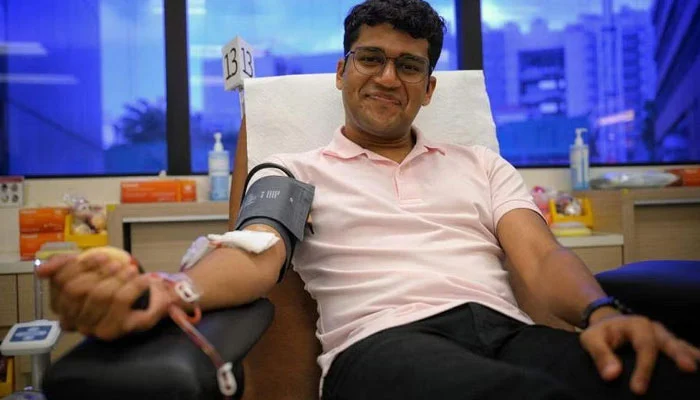Have you ever thought about the impact a small act, like donating blood, can have on saving lives? As Singapore faces a growing demand for blood due to an ageing population, the need for young blood donors is more critical than ever.
Meet Shiek Abdullah Mohamed Fazil, a 23-year-old National University of Singapore under-graduate who has donated blood 13 times since 2019.
Fazil’s motivation is simple: the knowledge that each blood donation has the potential to save three lives. Reflecting on his journey, Fazil acknowledges that some of his peers are hesitant, often due to fear of needles. To address this, he highlights the importance of inspiring and educating the younger generation about blood donation from an early age.
Recent data from the Singapore Red Cross (SRC) and the Health Sciences Authority (HSA) reveals a concerning trend. The number of youth blood donors, aged 16 to 25, has been on a down-ward trajectory. In 2023, youth constituted only 15 percent of the total donor pool, a decrease from 17 percent in 2022 and a significant drop from 33 percent in 2011.
The decline, exacerbated during the pandemic, prompted SRC to cancel school outreach and mobile blood drives, essential for educating and recruiting youth donors. While these activities have resumed, rebuilding momentum takes time.
SRC and HSA are actively working to dispel misconceptions surrounding blood donation. Initiatives include the Youth Blood Donor Programme, empowering young ambassadors, and digital tools like the DonateBlood app. Despite these efforts, with around 600 donors leaving the pool annually due to age or illness, sustaining an adequate blood supply remains a challenge.
The urgency is underscored by the fact that Singapore requires approximately 125,000 units of blood annually, a figure expected to rise to over 160,000 units by 2030. The ageing population, with a higher susceptibility to medical conditions, significantly contributes to the increased demand.
The recent appeal by SRC and HSA for O blood type donors ahead of the Chinese New Year highlights the critical need for diverse blood types. As the universal blood group, O blood type is vital during emergencies when patients’ blood groups are unknown. However, stocks are at critical levels, putting elective surgeries at risk and compromising life-saving transfusions.
Kymn Yee, a 44-year-old lecturer with thalas-saemia, emphasizes the personal impact of blood shortages. Her regular blood transfusions are crucial for a normal, healthy life. With half of Singapore’s patients having O blood type, the consequences of dwindling stocks are real and immediate.—AFP










